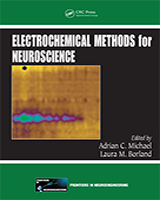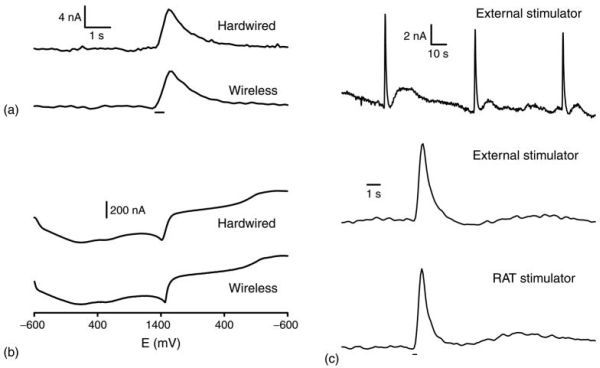From: Chapter 12, In Vivo Voltammetry with Telemetry

NCBI Bookshelf. A service of the National Library of Medicine, National Institutes of Health.

Comparison of hardwired and wireless systems for FSCV at a CFM and electrical stimulation: (a) dopamine levels were recorded at the same CFM by either the hardwired or wireless system (electrical stimulation was computer controlled and provided by the hardwired system as indicated); (b) background cyclic voltammograms were recorded at the same CFM by either the hardwired or wireless system as indicated; (c) dopamine levels were measured at the same CFM by the miniature RAT, but evoked either by the wireless device or an external stimulator (S88 Grass Stimulator, Grass-Telefactor, West Warwick, RI, U.S.A.) as indicated. All wireless measurements and electrical stimulation were performed by the miniature RAT shown in Figure 12.8. All recordings were collected in a urethane-anesthetized rat. The CFM was implanted in the dorsomedial caudate–putamen, and the stimulating electrode was implanted in the medial forebrain bundle. Electrical stimulation consisted of a 0.4 s, 60 Hz pulse train delivered at 125 μA.
From: Chapter 12, In Vivo Voltammetry with Telemetry

NCBI Bookshelf. A service of the National Library of Medicine, National Institutes of Health.